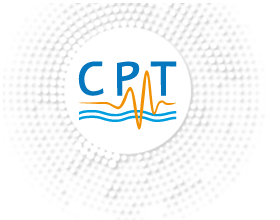Agenda
Mercredi 4 mai 2022
Stochastic Allen-Cahn equation with nonlinear diffusion
Hyunjoon Park (KAIST University, Daejeon, Corea)
In 1979 Allen and Cahn proposed the Allen-Cahn equation to describe the phase separation phenomena of Fe-Al alloy at high temperature. They conjectured that a steep transition layer, an interface, between two steady states will occur and propagates following the motion by mean curvature. For better understanding of the phase separation phenomena we add two features to the Allen-Cahn equation ; (1) nonlinear diffusivity and (2) stochastic perturbation. In this talk, we first try to understand how these features affect the motion of the interface in a formal way, then give a brief sketch of the mathematical proof.
Network motifs and the compressibility of neural connectomes
Alexis Bénichou (Institut Pasteur)
Physical and functional constraints on biological networks lead to topological patterns across multiple scales. A particular type of higher-order network feature that has received considerable interest are network motifs—statistically regular subgraphs. These may implement fundamental logical or computational circuits and have thus be referred to as “building blocks of complex networks”. Their well-defined structures and small sizes furthermore mean that their function is amenable to testing in synthetic and natural biological experiments.
Information theory tells us that the presence of statistical regularities in a network makes it compressible. This is particularly important for brain networks, whose wiring information would not be able to fit into the limited space of the genome in many species if not compressed. This “genomic bottleneck” principle agrees with the empirical observation, from fruit fly larvae to humans, that brain wiring diagrams, or connectomes, exhibit statistically regular structures such as subgraph motifs, communities, and non-random degree sequences.
I will present a methodology for motif mining based on lossless network compression using subgraph contractions. This provides an alternative definition of motif significance, which guarantees more robust statistical tests while conveniently avoiding random graph sampling. The minimum description length principle allows us to select the most significant set of motifs and other network features in terms of their combined compression of the network. Our approach thus overcomes fundamental statistical problems in classic census-based motif analysis, namely their inability to account for correlations between different motifs and to select the most appropriate null model when this is not known beforehand. I will discuss how the approach can be applied to perform comparative connectomics, by evaluating the connectomes’ compressiblity and comparing their circuit motifs.
